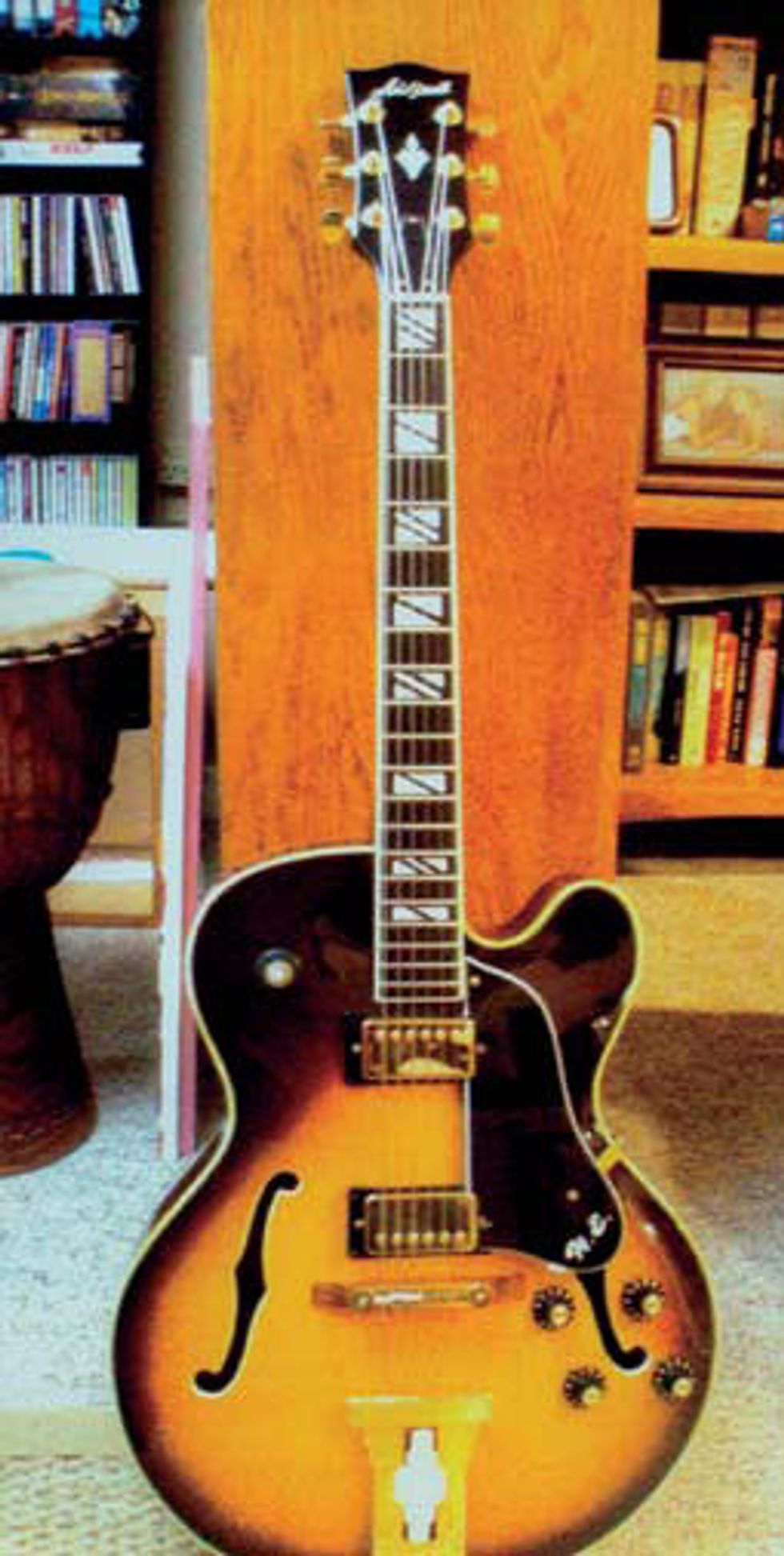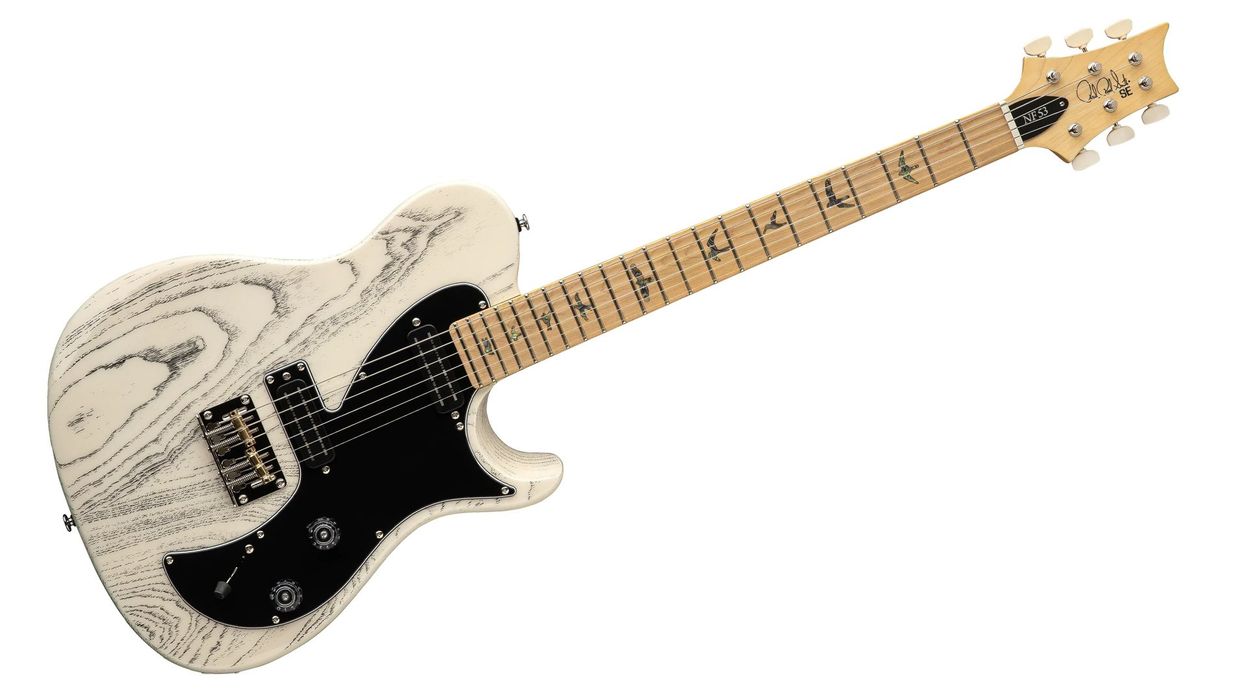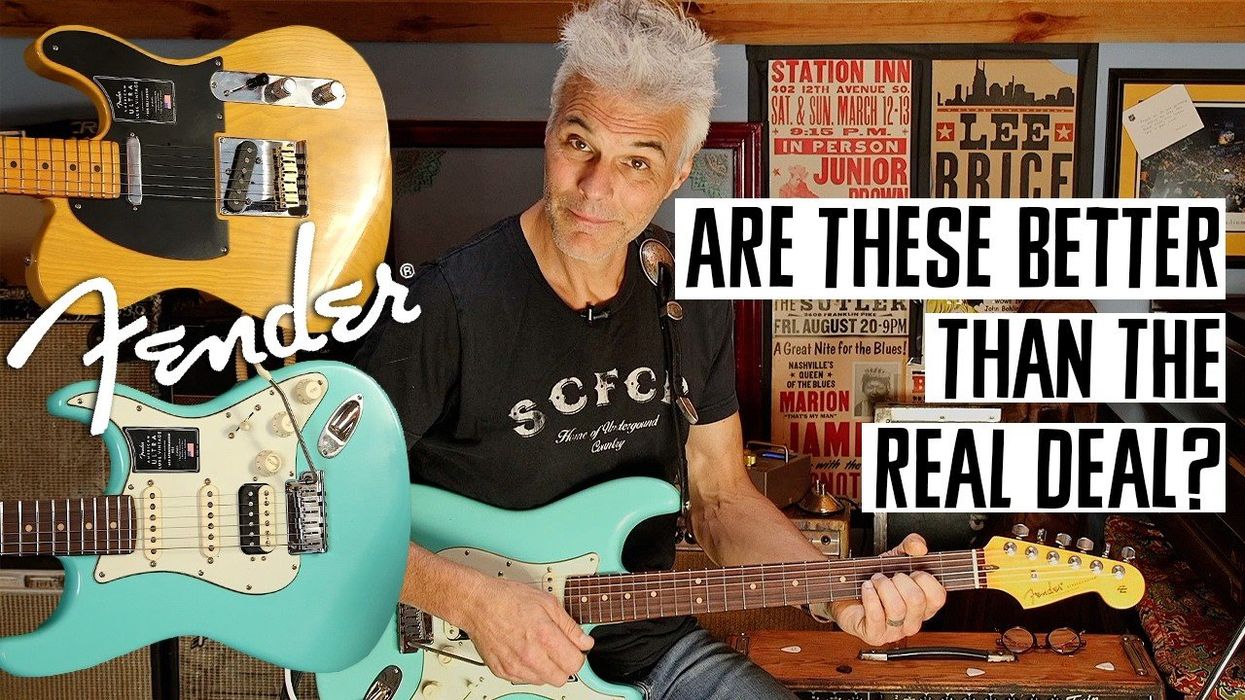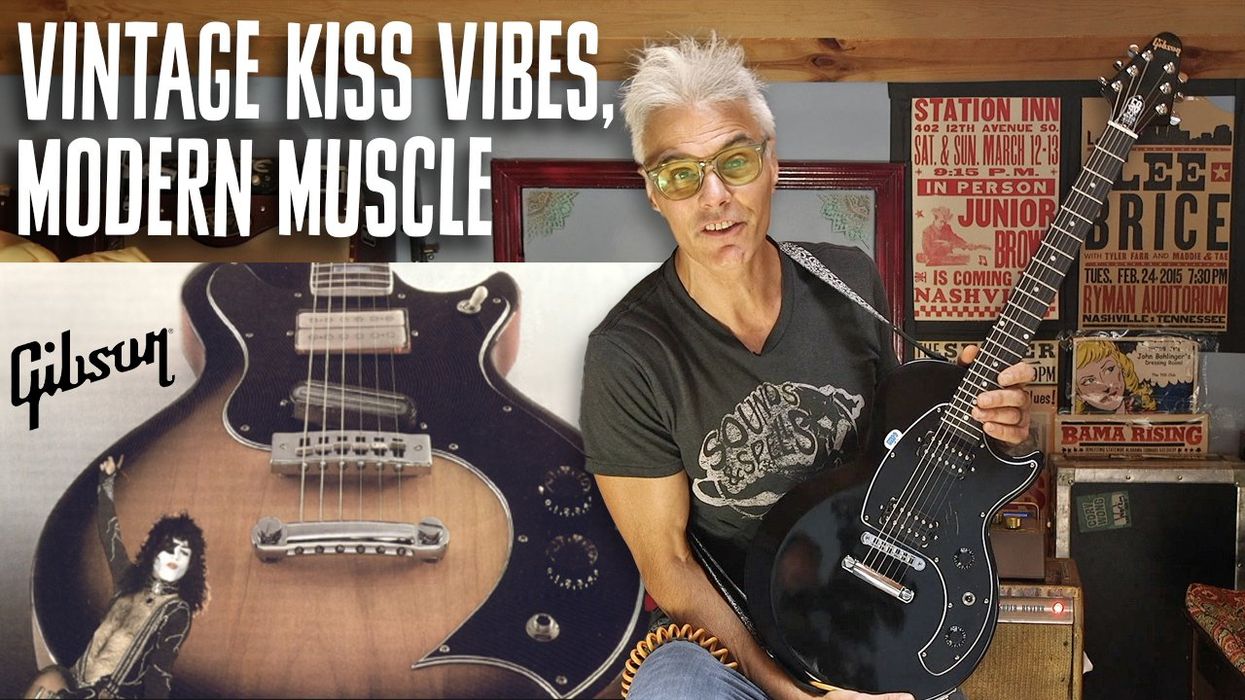Hey Zach,
I recently received a guitar that appears to be a Gibson copy Aria Pro II “Herb Ellis” model. The label inside the guitar indicates that it is a model TE 175 and the serial number is “1.” I’ve seen other Herb Ellis guitars with his name inlaid in the fingerboard and with different scrollwork on the head. I am interested in its value and any information you may have about this guitar.
Very truly yours,
Dave Miliotis, Roseville, MN
Hi Dave,
It’s not every day that I evaluate a guitar with a serial number of 1! Your Aria Pro II model is unique and I’ll explain why, but first let’s look at the history of Aria and Herb Ellis. Aria is the trademark of the Arai (note spelling) Company of Japan, which began producing guitars in the mid-1950s. At first, Aria focused on original guitar designs, but by the 1970s, they were doing what many other Japanese guitar companies were doing: copying popular American designs. In the mid-1970s, the trademark changed to Aria Pro II, which appeared mostly on electric guitars. After the “lawsuit era” of copied guitars ended in the late 1970s, Aria went back to offering original designs, and they continue to produce a variety of musical instruments in numerous countries. Aria guitars can be found with the trademarks of Aria, Aria Diamond, and Aria Pro II almost interchangeably, but since the early 2000s, all guitars are simply branded Aria.
Herb Ellis is a jazz guitarist who rose to fame in the 1950s, especially when he replaced Barney Kessel in the Oscar Peterson Trio. In 1953, Ellis bought a single-pickup Gibson ES-175 that became his main guitar for many years. While he was never a Gibson endorser during the 1950s and 1960s, he did help bring the ES-175 to stardom. In the late 1970s, Aria began offering a Herb Ellis hollowbody guitar that featured two humbucker pickups and a sharp Florentine cutaway—a sharp contrast to the single-pickup, smooth Florentine cutaway ES-175. It was called the PE 175, and it first appeared in Aria’s catalog circa 1978. Aria continued to produce the Herb Ellis signature model through the late 1980s, until he returned to his Gibson roots and they began producing the new ES-165 Herb Ellis model in 1991, which features his signature on the headstock.
 The label from your guitar has the model TE 175 stamped on it instead of PE 175, which is more than likely a misprint. The prefix TE is used for Aria’s Telecaster copies in the late 1970s, while PE stands for the “Professional Electric” Series that encompasses several Aria models from the late 1970s and 1980s. Also, the stamped serial number of “1” is very interesting. This is a Matsumoku-produced guitar, and they were fairly consistent in using a six-digit serial number where the first one or two digits indicated the year of manufacture. I believe that this guitar is one of the first Aria Herb Ellis models produced and is likely a prototype. It is also missing the 19th fret Herb Ellis pearl block inlay signature, likely added to production models.
The label from your guitar has the model TE 175 stamped on it instead of PE 175, which is more than likely a misprint. The prefix TE is used for Aria’s Telecaster copies in the late 1970s, while PE stands for the “Professional Electric” Series that encompasses several Aria models from the late 1970s and 1980s. Also, the stamped serial number of “1” is very interesting. This is a Matsumoku-produced guitar, and they were fairly consistent in using a six-digit serial number where the first one or two digits indicated the year of manufacture. I believe that this guitar is one of the first Aria Herb Ellis models produced and is likely a prototype. It is also missing the 19th fret Herb Ellis pearl block inlay signature, likely added to production models.
The Aria Pro II PE 175 “Herb Ellis” model features a laminated maple body, crème body binding, two bound f-holes, mahogany neck, 20-fret bound ebony fingerboard with split square inlays, three-per-side tuners, rosewood-based adjustable bridge, engraved “Pro II” tailpiece, layered black pickguard with “H.E.” initials, two covered AL7 humbucker pickups, four knobs (two Volume, two Tone), three-way pickup switch, gold hardware and Sunburst finish.
Without Matsumoku’s factory records, and the fact that Aria’s presence in the US is simply distribution, we may never know the truth about the odd label in your guitar. When determining value, I always remind people that just because it is rare doesn’t necessarily mean it is collectible or worth more than a run-of-the-mill PE 175. Today, this guitar is worth between $800 and $1000, but would any collector or player pay a premium because this guitar is a possible prototype or the first one produced? Without trying to sell it and see what it will fetch in the used guitar marketplace, you may never discover the true collector value, but it is certainly a treasure nonetheless.
Zachary R. Fjestad
Zachary is the author of the Blue Book of Acoustic Guitars, Blue Book of Electric Guitars, and the Blue Book of Guitar Amplifiers. Questions can be submitted to:
Blue Book Publications
Attn: Guitar Trash or Treasure
8009 34th Ave. S. Ste #175
Minneapolis, MN 55425
bluebookinc.com
guitars@bluebookinc.com
I recently received a guitar that appears to be a Gibson copy Aria Pro II “Herb Ellis” model. The label inside the guitar indicates that it is a model TE 175 and the serial number is “1.” I’ve seen other Herb Ellis guitars with his name inlaid in the fingerboard and with different scrollwork on the head. I am interested in its value and any information you may have about this guitar.
Very truly yours,
Dave Miliotis, Roseville, MN
Hi Dave,
It’s not every day that I evaluate a guitar with a serial number of 1! Your Aria Pro II model is unique and I’ll explain why, but first let’s look at the history of Aria and Herb Ellis. Aria is the trademark of the Arai (note spelling) Company of Japan, which began producing guitars in the mid-1950s. At first, Aria focused on original guitar designs, but by the 1970s, they were doing what many other Japanese guitar companies were doing: copying popular American designs. In the mid-1970s, the trademark changed to Aria Pro II, which appeared mostly on electric guitars. After the “lawsuit era” of copied guitars ended in the late 1970s, Aria went back to offering original designs, and they continue to produce a variety of musical instruments in numerous countries. Aria guitars can be found with the trademarks of Aria, Aria Diamond, and Aria Pro II almost interchangeably, but since the early 2000s, all guitars are simply branded Aria.
Herb Ellis is a jazz guitarist who rose to fame in the 1950s, especially when he replaced Barney Kessel in the Oscar Peterson Trio. In 1953, Ellis bought a single-pickup Gibson ES-175 that became his main guitar for many years. While he was never a Gibson endorser during the 1950s and 1960s, he did help bring the ES-175 to stardom. In the late 1970s, Aria began offering a Herb Ellis hollowbody guitar that featured two humbucker pickups and a sharp Florentine cutaway—a sharp contrast to the single-pickup, smooth Florentine cutaway ES-175. It was called the PE 175, and it first appeared in Aria’s catalog circa 1978. Aria continued to produce the Herb Ellis signature model through the late 1980s, until he returned to his Gibson roots and they began producing the new ES-165 Herb Ellis model in 1991, which features his signature on the headstock.
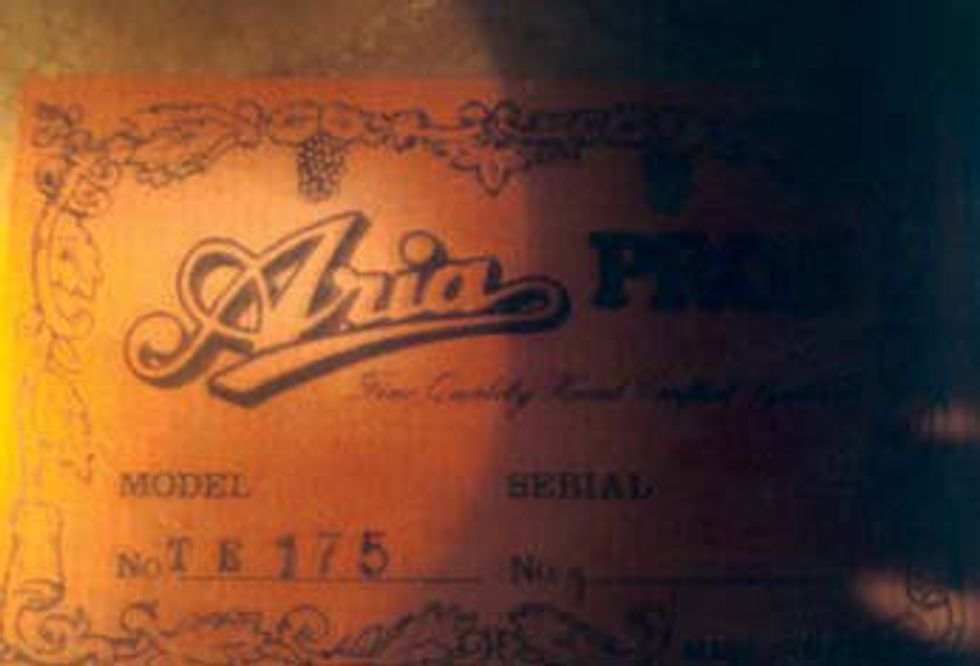 The label from your guitar has the model TE 175 stamped on it instead of PE 175, which is more than likely a misprint. The prefix TE is used for Aria’s Telecaster copies in the late 1970s, while PE stands for the “Professional Electric” Series that encompasses several Aria models from the late 1970s and 1980s. Also, the stamped serial number of “1” is very interesting. This is a Matsumoku-produced guitar, and they were fairly consistent in using a six-digit serial number where the first one or two digits indicated the year of manufacture. I believe that this guitar is one of the first Aria Herb Ellis models produced and is likely a prototype. It is also missing the 19th fret Herb Ellis pearl block inlay signature, likely added to production models.
The label from your guitar has the model TE 175 stamped on it instead of PE 175, which is more than likely a misprint. The prefix TE is used for Aria’s Telecaster copies in the late 1970s, while PE stands for the “Professional Electric” Series that encompasses several Aria models from the late 1970s and 1980s. Also, the stamped serial number of “1” is very interesting. This is a Matsumoku-produced guitar, and they were fairly consistent in using a six-digit serial number where the first one or two digits indicated the year of manufacture. I believe that this guitar is one of the first Aria Herb Ellis models produced and is likely a prototype. It is also missing the 19th fret Herb Ellis pearl block inlay signature, likely added to production models.The Aria Pro II PE 175 “Herb Ellis” model features a laminated maple body, crème body binding, two bound f-holes, mahogany neck, 20-fret bound ebony fingerboard with split square inlays, three-per-side tuners, rosewood-based adjustable bridge, engraved “Pro II” tailpiece, layered black pickguard with “H.E.” initials, two covered AL7 humbucker pickups, four knobs (two Volume, two Tone), three-way pickup switch, gold hardware and Sunburst finish.
Without Matsumoku’s factory records, and the fact that Aria’s presence in the US is simply distribution, we may never know the truth about the odd label in your guitar. When determining value, I always remind people that just because it is rare doesn’t necessarily mean it is collectible or worth more than a run-of-the-mill PE 175. Today, this guitar is worth between $800 and $1000, but would any collector or player pay a premium because this guitar is a possible prototype or the first one produced? Without trying to sell it and see what it will fetch in the used guitar marketplace, you may never discover the true collector value, but it is certainly a treasure nonetheless.
Zachary R. Fjestad
Zachary is the author of the Blue Book of Acoustic Guitars, Blue Book of Electric Guitars, and the Blue Book of Guitar Amplifiers. Questions can be submitted to:
Blue Book Publications
Attn: Guitar Trash or Treasure
8009 34th Ave. S. Ste #175
Minneapolis, MN 55425
bluebookinc.com
guitars@bluebookinc.com
